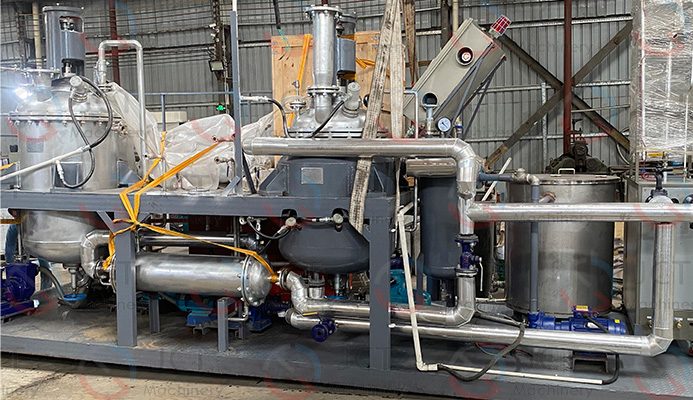Some customers have asked JCT why the price of buying the equipment separately is so different from the total price of buying the entire production line?
The secret lies in the pipes that connect all the equipments!

1. Increased Material Costs
Stainless steel pipes, flanges, elbows, valves and other accessories are expensive in themselves, especially when SS304 or SS316 is used, the cost is even more considerable.
The more pipes there are, the more seals, insulation materials and supports are involved, which directly increases the overall material budget.
2. Rising Processing and Labor Costs
Each pipeline needs to be cut, ground, welded, polished and other processes, which increases a lot of manual work.
When the pipeline is complex, professional welders are required to perform argon arc welding or automatic welding, which has high labor costs.
When the pipeline has diverse directions and dense intersections, installation and wiring are difficult, construction time becomes longer, and the number of workers also needs to increase.
3. Complex Process Steps
The more pipelines there are, the more difficult it is to design the overall layout and process flow of the equipment.
During the design stage, engineers need to consider issues such as fluid mechanics, pressure balance, temperature control efficiency, and anti-blocking, which requires more calculations and drawing optimization.
During the manufacturing process, the layout needs to be adjusted many times, involving multiple rounds of trial installation and adjustment, which is time-consuming and labor-intensive.
4. Rising Testing and Debugging Costs
Each process pipeline must undergo pressure testing, weld testing and vacuum pressure testing.
For high-demand production lines (such as pharmaceuticals, fine chemicals, etc.), cleaning, passivation, and sterility testing are also required.
More pipelines also mean more control valves, flow monitoring, and automation component access points, so testing and debugging costs naturally increase.

 Home
Home JCT
JCT  Apr 19,2025
Apr 19,2025 
 Paint And Coating Production Line
Paint And Coating Production Line 







